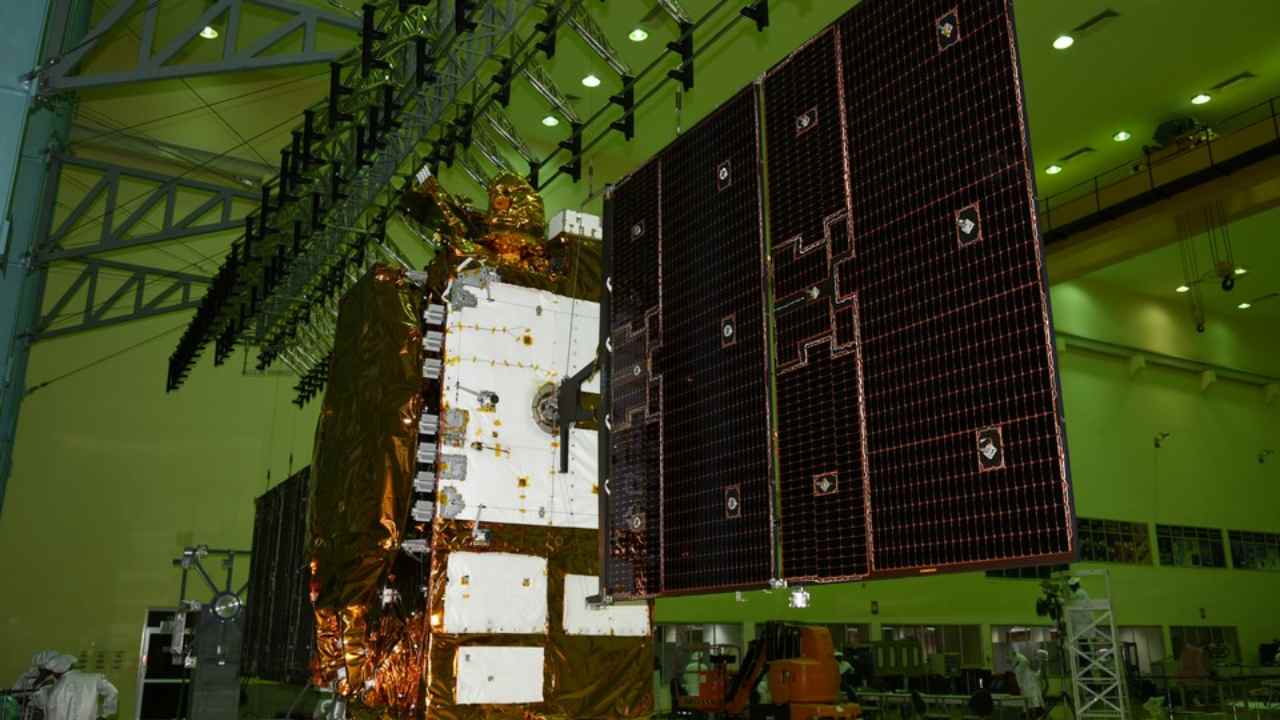The ISRO has completed the fourth manoeuvre to position the GSAT-7A military communication satellite closer to its final position on Monday. The satellite is now very close to its final position in the geostationary orbit, which is located at an altitude of around 35,786 km from Earth. The satellite is currently between 35,800 and 36,092 kilometres away, and will be moved in a final orbital manoeuver to its final position, ISRO said in a statement. ISRO has built and used the propulsion system, or thrusters, on GSAT-7A to perform four such manoeuvres so far. GSAT-7A, a satellite built by ISRO for the Indian Air Force, was launched on a GSLV-Mk2.1 rocket (GSAT-F11) on 19 December from the Satish Dhawan Space Centre (SDSC) at Sriharikota.
The satellite was injected into a sun-synchronous orbit, which is roughly 2000 kilometres higher than the geosynchronous transfer orbit, in which most satellites are released by launch vehicles to be moved and positioned in low-Earth orbit. This was a deliberate effort to save fuel on the GSAT-7A and enhance its life-span as much as possible beyond the 8 years it was designed to last.
The GSAT-7A satellite: All you need to know
GSAT-7A is ISRO’s 35th communications satellite built exclusively for the Indian Air Force (IAF) and the Indian Army.
**ISRO's 2.25-ton GSAT-7A** is designed to work in the Ku-band frequency and houses a powerful ‘I-2K’ bus, which functions as the satellite’s communication hub or service module. The satellite will expand the communication capabilities of the IAF in different ways. [caption id=“attachment_5743901” align=“alignnone” width=“1280”] The military communications satellite GSAT-7A with its solar panelled opened up. Image courtesy: ISRO[/caption] First, GSAT-7A
will allow cross-connectivity between different ground radar stations, airbases and Airborne early warning and control (AWACS) aircraft like the Beriev A-50 Phalcon. The satellite will also boost the air force’s network-dependent warfare capabilities, enhancing its abilities to operate globally. It is also expected to give a big push to drone operations in the Indian military by helping the Navy reduce its reliance on ground-based control stations and switch to satellite-controlled unmanned aerial vehicles (UAVs), that offer better range and endurance, industry experts
told Business Standard. 2018 has been an eventful year, and here’s our comprehensive list of
year ender stories.


)
)
)
)
)
)
)
)
)



